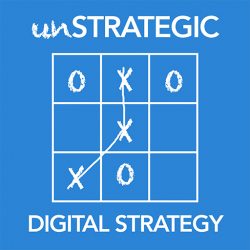Watching the tides turn in the digital age is as quick as the ocean currents. These microscopic movements that all feed into a bigger pool are advancing technology at an unprecedented rate. In fact, 58% of corporate execs say it will develop at an increasingly rapid rate over the next 5 years. Check out Accenture’s 2016 trend report. With all that in mind, what’s your agency’s plan to keep up-to-date with all this new technology. What’s your agency’s plan to take advantage of the opportunities they can bring? Let me show you how I got started.
Living in the Age of Information
We live in the age of information. It’s almost too much because it’s coming at us from every single direction. Accenture, Hewlett Packard, Deloitte, and more are all putting out new reports, trends, and surveys. You can find these reports just by searching “2016 tech trend reports” 0r some variation of that. To give you a little tip that I use, I will always append “pdf” to my search queries in order to find reports that you otherwise might not be able to. It amazes me how many PDFs are out there right now. After searching, you’ll need to categorize. Now I have a folder in my Google Drive that breaks down into more folders comprised of only PDFs. I categorize them as such:
- Industries: health, travel, nonprofit, media, B2B, Agency, Consulting. These could be different for you
- Market Intelligence: you can find these reports by searching “market intelligence ‘your industry here’ pdf” I separate these by year
- Trend Reports: pretty self-explanatory; usually having to do with some sort of survey
- Misc. Whitepapers: Because these are always fun to read and have, you can use them as sales collateral when talking to a prospective buyer, and even client.
Once you’ve compiled a number of relevant reports, now it’s time to start reading them. Now, with all the PDFs I have it would take, literally, close to 6 months to read (I’m a slow reader), don’t read them. Skim them, graze them, pluck them, don’t peruse them.
Mining for Information
There is obviously a reason why we have headers and titles and large print. When you are skimming over these PDFs, just look for the headlines, quotes, sidebars with numbers in them. Pick off the statistical data and write it down some place else. You’ll eventually use this information to mine for opportunities. If there’s a headline that interests you and it’s followed by 5 paragraphs, read those paragraphs. I’ll always use a speed reading technique by Tim Ferris that has increased my words-per-minute by 25%. Or check out tips on how to read faster. But remember, you still need to comprehend what you’re reading for it to be valuable in mining for opportunities.
As you continue to gather information, you need to start categorizing it so it’s digestible for your client. I separate my information into a few areas:
- Market Intelligence:
- Usually in the form of surveys, I’ll state what has significantly changed in a sector or industry. For instance, the Agency of Record (AOR) lasts less than 3 years according to Agency Spotter’s 2016 Report. And the average project-based fees for agencies have increased. Now, put the cost of living aside, this tells me that brands and companies are seeking out agencies that fit their specific projects, not necessarily their ongoing needs.
- Disruptors & Influencers:
- Who is making a big splash right now in tech or what technology is outpacing all the rest.
- Competitors & Users:
- What is the competition doing, what are your client’s users doing
- New Trends, Technology, and Terms:
- Things that are trending. New technology that your client might be able to leverage. New terms that people in the industry are using.
All this info will eventually lead into Insights & Opportunities.
Finding…and mining insights
An insight is the capacity to gain an accurate and deep intuitive understanding of a person or thing. Wow!! Intense, right? Yup, it sure is. So, here’s essentially what I mean when I say strategy in context. Out of all the information you’ve gathered, it won’t make a bit of difference unless you understand who you’re gathering it for. I’ll give you an example. I work with health and wellness clients, nonprofit, media, agencies, and more. The info that I gather have something to do with these sectors and markets. But insights are relevant only when you understand who you’re gathering that information for. Which brings me to intake sheets.
Intake sheets are information about your client. You’ll want to gather info on them. Keep a record of the following:
- Client: contact info; organizational structure.
- Company overview: what do they do, what are their values, etc.?
- Products/Services: what do they provide?
- Major Markets: where are they doing business, what countries?
- Value: what’s their value proposition?
- Strengths/Weaknesses: what do they do better than anyone else; where could they improve?
- Account/Project Objectives: what are the things they want to accomplish, major goals?
- Competitors: keep a list of at least their top 3 competitors, I would even list the best in business in their industry.
- Users: user personas are a huge part of this insight gathering, I’ll post more on personas in another one of my Strategy in Context posts.
- Partners: who is your client partnering with in the market? Are they complimentary?
As time goes on you’ll pick up the idiosyncrasies that make your client who they are. You’ll learn things about their culture that will provide more insight into them as an organization. Hence, providing more insight into how you can mine for opportunities.
Mining for the non-opportunity
I want to clarify that mining for opportunities is not trying to find just any project you think your client wouldn’t mind doing. It’s adding real value to their organization. In order to do that, you have to look at all the possibilities. And as a sidenote, it sometimes means you may not be providing the solution.
Let’s say you are working with a nonprofit and they are in the process of building out a donation platform for their donors. This platform is something that you helped design on the front-end, but the back-end was built by another firm. Essentially, this platform almost works like a banking platform. Donors can store their money and make donations to the organization or cause of their choosing. And let’s say the other firm is having a difficult time securing the platform. Well, if you kept up-to-date on the latest trends, you could give them an insight into what people are talking about right now in the security space. Which is Blockchain.
Today’s financial institutes operate on a central ledger where money is passed from one entity to another. The ledger is monitored and kept by one authority, leaving it susceptible to attack and corruption. Blockchain is a transactional database that decentralizes the ledger and allows for complete transactional security, it’s also lower in cost. You’d probably have to refer the nonprofit to a blockchain expert, but the value you’ve given them is high.
Mining for the real opportunity
To mine for the real opportunity depends on your client’s goal, their users’ needs, and where they sit on the spectrum of innovation. If they are at the lower end of the innovation spectrum, there’s probably a lot of opportunities to mine for. If they’re more toward the middle, it starts to get a little harder. Brands and organizations that don’t keep up with the latest trends and technology are they ones who have the most options. The ones who are at the top, are the ones who are paving the way for everyone else, and the options narrow.
Let’s say you’re working with that same nonprofit and their goal is to get as many donors as they can using this platform. If you knew that the retention rate of first-year donors was only 29% or that roughly 50% of donors do not renew their gifts the following year, what would you do with that information? You’d dig in….why are donors not renewing their gifts? Then you’d probably find out that donors like to feel connected. They like to see the impact that their donations have on communities and the lives they’re helping. Well…what opportunity can we find there?
My suggestion would be to offer to build a website that connects donors with donees. But also shares the stories donees have because of getting donations. It could be anonymous, but having a platform that could show where a donor’s donation is going and in what way it’s helping the donee could be really cool. People are attached to stories, we love them. Build a website that tells the story of donee’s or add a section to an existing site. There are a lot of possibilities in that one particular insight. Get creative!
Mining is a continual thing
In closing I’ll say this. Mining for opportunities is a continual thing. You’ll be getting new information as time goes on, you’ll be learning more and more about the needs of your client as the months/years pass. Always be adding value. That’s the best way to mine for opportunities. If you can show your client that you offer these insights and valuable opportunities, you’ll be seen as a strategic partner and an invaluable one at that.

